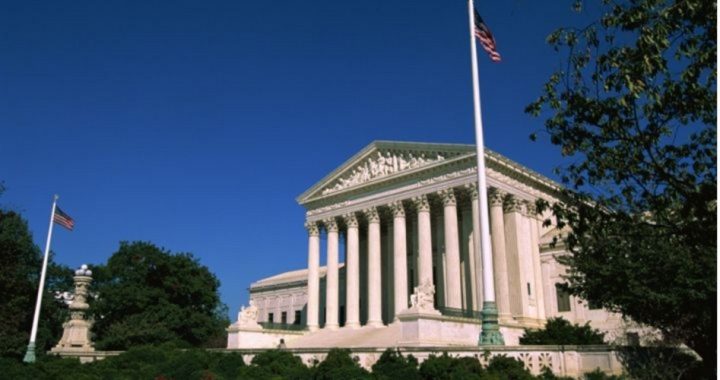
One of the most important responsibilities entrusted to the president by the Constitution (with the advice and consent of the Senate) is to appoint judges to the Supreme Court. Because of the vast philosophical differences between the two candidates running for president this year, this was an important consideration among voters in making their decision concerning whom to vote for. With the electoral triumph of Donald Trump, many media pundits are writing about what this event likely portends for the future of the Supreme Court.
An article on the subject in the New York Times for November 9 began unequivocally:
Donald Trump’s presidential victory preserves the Supreme Court’s narrow conservative majority by clearing the way for the new president to choose a jurist next year to fill the seat of the late Justice Antonin Scalia.
Not surprising, though one would not know it from the absence of any reference to the matter in most of the election night coverage, was the importance of the candidates’ impact on the Supreme Court in the voters’ decision on whom to vote for. A writer for the Los Angeles Times correctly observed:
The future of the Supreme Court’s ideological balance proved to be a critical factor for many Republican voters. In exit polls, about 1 in 5 voters said the Supreme Court appointments were “the most important factor” in their decision, and those voters favored Trump by a 57% to 40% margin, according to ABC News.
Most observers, including the L.A. Times, noted that the replacement of Scalia with a like-minded justice would not change the high court overnight, but merely restore it to where it was before the late justice died last February. The Times report offered the role of justice Anthony Kennedy, often regarded as the “swing” vote between conservative and liberal justices, as an example of how things often went, even with Scalia on the court.
Last June, Kennedy voted with the liberals to strike down a Texas law whose strict health and safety requirements would have resulted in the closing of most of the state’s abortion facilities, essentially preserving the effects of the Roe v. Wade decision for some time. It would take the replacement of yet another liberal justice with one more inclined to vote with the conservatives on social matters to reverse Roe. The three most likely liberal justices to leave the court during the next four years would be Justices Ruth Bader Ginsburg, 83; Kennedy, 80; or Stephen Breyer, who is 78.
The Times quoted John Malcolm, a legal analyst at the Heritage Foundation (which helped Trump put together his list of potential high court nominees before the election), as sayng: “Filling the Scalia seat is probably a wash. But the odds are very high that in four or eight years, President Trump will have other vacancies to fill, and that will be a different story.”
An article in the Times summed up the impact of the Trump victory on the future of the court from the liberal perspective: “The election dashes the hopes of liberals, who lost their best opportunity in more than 40 years to create a majority on the high court.”
The important distinction between Trump’s outlook on nominating justices to the Supreme Court and his opponent Hillary Clinton’s preferences was demonstrated during the first moments of the last presidential debate held between the two candidates on October 19 in Las Vegas. The debate moderator, Fox News Channel’s Chris Wallace, posed this question to the candidates:
First of all, where do you want to see the court take the country? And secondly, what’s your view on how the Constitution should be interpreted? Do the founders’ words mean what they say or is it a living document to be applied flexibly according to changing circumstances?
Clinton replied, in part:
I feel strongly that the Supreme Court needs to stand on the side of the American people, not on the side of the powerful corporations and the wealthy. For me, that means that we need a Supreme Court that will stand up on behalf of women’s rights, on behalf of the rights of the LGBT community….
I have major disagreements with my opponent about these issues and others that will be before the Supreme Court. But I feel that at this point in our country’s history, it is important that we not reverse marriage equality, that we not reverse Roe v. Wade, that we stand up against Citizens United, we stand up for the rights of people in the workplace, that we stand up and basically say: The Supreme Court should represent all of us.
It is surprising that Clinton would specifically mention Roe v. Wade, knowing that it would be a lightning rod certain to alienate millions of pro-life American voters.
When it was Trump’s turn to answer, he said, in part:
We need a Supreme Court that in my opinion is going to uphold the Second Amendment, and all amendments, but the Second Amendment, which is under absolute siege. I believe if my opponent should win this race, which I truly don’t think will happen, we will have a Second Amendment which will be a very, very small replica of what it is right now….
I feel that the justices that I am going to appoint — and I’ve named 20 of them — the justices that I’m going to appoint will be pro-life. They will have a conservative bent. They will be protecting the Second Amendment. They are great scholars in all cases, and they’re people of tremendous respect. They will interpret the Constitution the way the founders wanted it interpreted.
After debating back and forth about the Second Amendment, which Clinton claimed to uphold while at the same time asserting that the right to keep and bear arms right be “reasonably limited,” Wallace again visited the subject of abortion. He asked Trump: “Do you want the court, including the justices that you will name, to overturn Roe v. Wade, which includes — in fact, states — a woman’s right to abortion? … Do you want to see the court overturn Roe v. Wade?
Trump replied, in part:
Well, if we put another two or perhaps three justice[s] on, that’s really what’s going to be — that will happen. And that’ll happen automatically, in my opinion, because I am putting pro-life justices on the court. I will say this: It will go back to the states, and the states will then make a determination.
Asked to respond, Clinton said:
Well, I strongly support Roe v. Wade, which guarantees a constitutional right to a woman to make the most intimate, most difficult, in many cases, decisions about her health care that one can imagine. And in this case, it’s not only about Roe v. Wade….
Donald has said he’s in favor of defunding Planned Parenthood. He even supported shutting the government down to defund Planned Parenthood. I will defend Planned Parenthood. I will defend Roe v. Wade, and I will defend women’s rights to make their own health care decisions.
The pro-life viewer did not really need to watch any more of the debate, because on the critical issue of life, the stark difference between the candidates on this point decided their choice right there.
Now that the election is history, what do we have to look forward to when Trump takes office and appoints his first candidate to become a Supreme Court justice?
We have a very good indication of what type of justice Trump will name, because he has already revealed quite a comprehensive list of candidates he will consider. The names of these potential justices were noted in two articles posted by The New American in May and September.
In May Trump released the names of 11 individuals he would consider for the court. He said of his list that it “is representative of the kind of constitutional principles I value,” adding that he would use it “as a guide to nominate our next United States Supreme Court justices.” He stated earlier in the campaign that he would choose judges in the mold of Scalia, whom he described as “a remarkable person and a brilliant Supreme Court justice.”
Those listed were William Pryor, Jr. of Alabama; Thomas Hardiman of Pennsylvania; Thomas Lee of Utah; Diane Sykes of Wisconsin; Don Willett of Texas; David Stras of Minnesota; Joan Larsen of Michigan; Steven Colloton of Iowa; Allison Eid of Colorado; Raymond Gruender of Missouri; and Raymond Kethledge of Michigan. A brief description of some of the candidates can be found in the May article.
In addition to those 11 nominees, the Trump campaign announced 10 more in September:
• Senator Mike Lee (R-Utah);
• Neil Gorsuch, a judge of the Tenth Circuit Court of Appeals.
• Margaret Ryan, a judge of the U.S. Court of Appeals for the Armed Forces;
• Edward Mansfield, a justice of the Iowa Supreme Court;
• Keith Blackwell, a justice of the Georgia Supreme Court;
• Charles Canady, a justice of the Florida Supreme Court;
• Timothy Tymkovich, chief judge of the Tenth Circuit Court of Appeals;
• Amul Thapar, a judge of the U.S. District Court for the Eastern District of Kentucky;
• Frederico Moreno, a judge of the U.S. District Court for the Southern District of Florida; and
• Robert Young, chief justice of the Michigan Supreme Court.
John Malcolm of the constitutionally conservative Heritage Foundation expressed his opinion on the list from a limited government and original intent point of view, stating in part:
When it comes to interpreting statutes and the Constitution, a judge must keep uppermost in mind that he or she did not write the text and should not attempt to rewrite that text through creative “interpretation” to mean something quite different from what was intended by its drafters, but which he or she personally considers more fair, wise, or just.
In other words, a judge should interpret the text and structure of a statute or the Constitution, based on the original public meaning of that text at the time it was adopted, and should not, under the guise of statutory or constitutional interpretation, impose on the rest of society his or her own policy predilections based on that judge’s perceptions of contemporary mores. The men and women whose names have been added to the list appear to adhere to this view. [Emphasis added.]
Related articles:
Trump Expands List of Potential Nominees to Supreme Court
Trump’s Supreme Court List May Help Unify Deeply Divided GOP
Justice Thomas Urges Faith in World “Gone Mad With Political Correctness”
Hillary Clinton Would Use SCOTUS Vacancies to Destroy the Constitution



